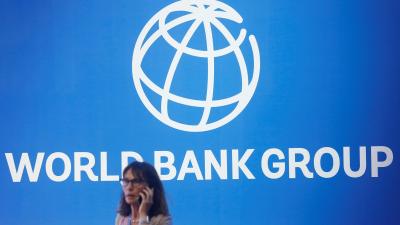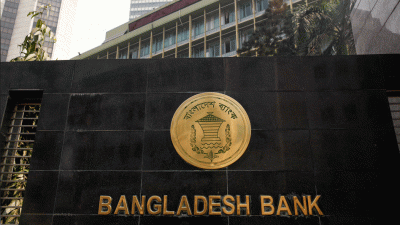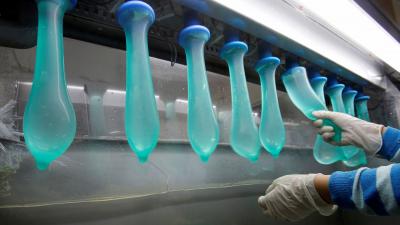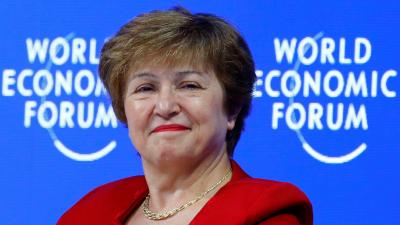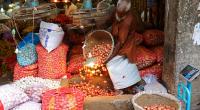 “Holy cow” would not be an inappropriate response upon learning that there is big money to be made in cattle scraps.
“Holy cow” would not be an inappropriate response upon learning that there is big money to be made in cattle scraps.
In Bangladesh, the cattle market is huge. There is the demand for hides from tanneries who supply leather, and the demand for beef. The Eid-ul-Azha might be an annual boom, but it produces quite a chunk of cash. But there is yet another market that has been quietly turning the discarded scraps, left after the meat and the hide have been taken away.
Bones, hooves, horns, penises, tails, all that is considered offal, has a market with an annual turnover of around Tk1.24 billion. Traders involved in the sector said that a good infrastructure, branding, and government support can boost exports to the extent of thousands of tons.
The Bangladesh Bone Exporters and Merchant Association estimates that the collection of waste bones stands at 10-50 tons per year, employing around 20,000 people in the informal sector.
The Ministry of Fisheries and Livestock said, leftovers from the slaughtered animals is sold daily at Tk40,000 to Tk50,000 across Bangladesh, and it goes up during Eid-ul-Azha.
Meet Bhola Mia: A pioneer in the industry
In Dhaka’s Hazaribagh, Sayedabad, Matuail, labourers relentlessly separate the organs, and clean them. The market is not limited to Dhaka, there are similar merchants in Chattogram, Khulna, Barishal, Nilphamari and Dinajpur.
Because of the growing demand, leftover bones are now being exported to 19 countries, especially to Japan and China, said Bhola Mia, proprietor of MS Abid and Brothers.
Before the Liberation War, a preteen Bhola Mia used to collect bones, and then sell it for Tk0.15 per kg to a Punjabi businessman named Nazim Uddin, who owned a slaughterhouse.
Each cow has around 15-25kg of leftover bones, according to Poribesh Bachao Andolon.
After the independence in 1971, he noticed an advertisement which offered Tk11 per kg for bones. He stared stunned at the 730% increase in prices, in the ad posted by a young enterprise called Bangladesh Export Import Company Limited, more widely known by its acronym Beximco.
“I was curious as how the bones could be of any use,” said Bhola Mia.
Bhola Mia spends Tk600,000-700,000 every day in collecting the cattle refuse.
The collectors pay Tk10-12 per kg of bones, and resell these to Bhola at Tk18-19. During the Eid-ul-Azha, the price of bones go up to Tk26.5, said Bhola Mia.
Currently, two permanent employees, with a fixed salary of Tk16,000 are employed by Bhola Mia, while six to seven laborers are employed at a payment of Tk600 per day.
During Eid, he hired another 40-50 workers to deal with the increased workload.
Up to Tk1,500 can be earned every day just from selling the bones, fat, horns, hooves, and penis of a cow.
Recyclable bones cost Tk30 per kg, and penis sell for Tk400 per kg.
The business always picks up after Eid-ul-Azha when between 12,000-15,000 shops pop up, and 500 trash collectors seek out cow, buffalo, and goat offal, according to the Grambangla Unnayan Committee.
Nearly 200,000 tons of waste was generated from sacrificial animals during this past Eid, according to Dhaka's two city corporations.
Bhola Mia said, the sector faces severe financial, and infrastructure problem. There is a distinct lack of infrastructure despite the involvement of large corporations like Beximco.
Bhola claimed: “After the Liberation War, we tried getting loans, but nobody responded. Neither the government nor the local representatives have shown any interest in the millions of Dollars we could make from this sector!”
 Business
Business
41404 hour(s) 22 minute(s) ago ;
Evening 11:17 ; Monday ; Jul 07, 2025
Bangladesh’s secret cow industry with a global market
Send
Mamun Abdullah
Published : 09:18, Sep 29, 2019 | Updated : 09:20, Sep 29, 2019
Published : 09:18, Sep 29, 2019 | Updated : 09:20, Sep 29, 2019
0 ...0 ...
/pdn/
Topics: Top Stories
- KOICA donates medical supplies to BSMMU
- 5 more flights to take back British nationals to London
- Covid19: Rajarbagh, Mohammadpur worst affected
- Momen joins UN solidarity song over COVID-19 combat
- Covid-19: OIC to hold special meeting
- WFP begins food distribution in Cox’s Bazar
- WFP begins food distribution in Cox’s Bazar
- 290 return home to Australia
- Third charter flight for US citizens to return home
- Dhaka proposes to postpone D8 Summit
Unauthorized use of news, image, information, etc published by Bangla Tribune is punishable by copyright law. Appropriate legal steps will be taken by the management against any person or body that infringes those laws.
Bangla Tribune is one of the most revered online newspapers in Bangladesh, due to its reputation of neutral coverage and incisive analysis.
F R Tower, 8/C Panthapath, Shukrabad, Dhaka-1207 | Phone: 58151324; 58151326, Fax: 58151329 | Mob: 01730794527, 01730794528

